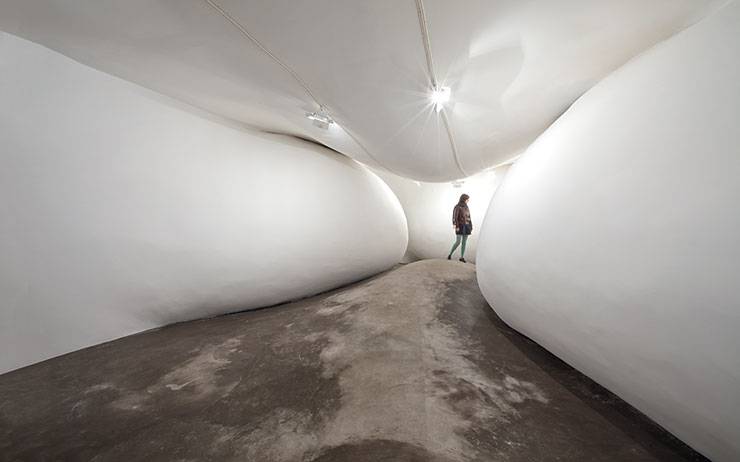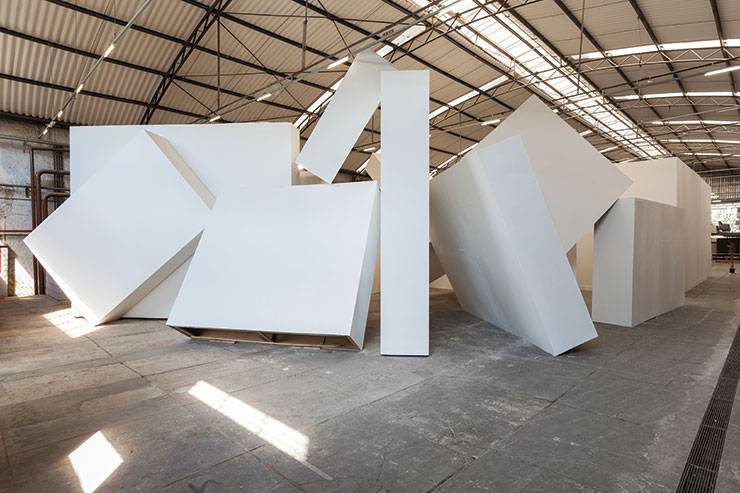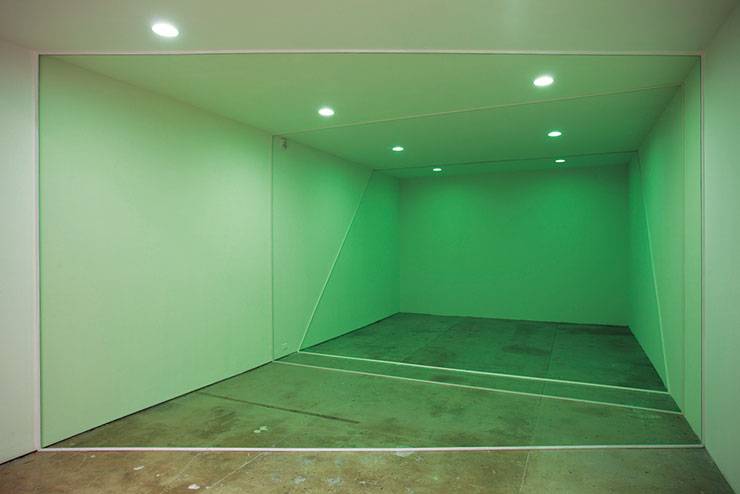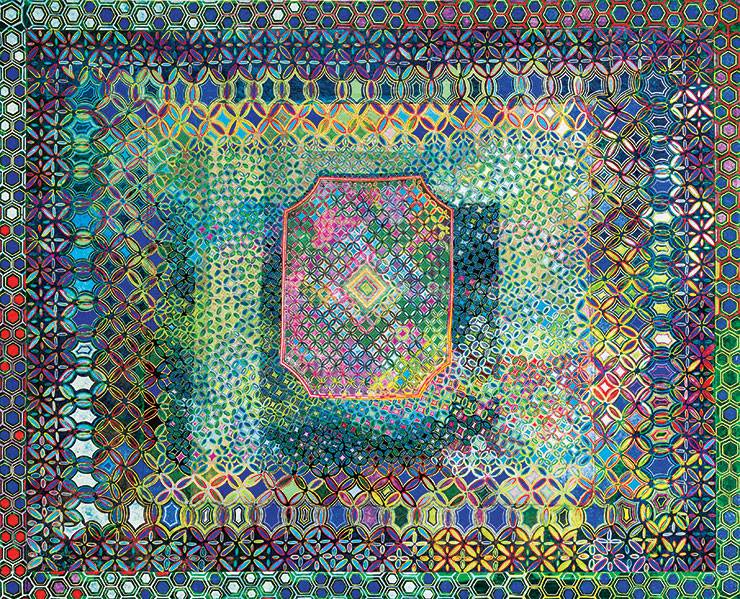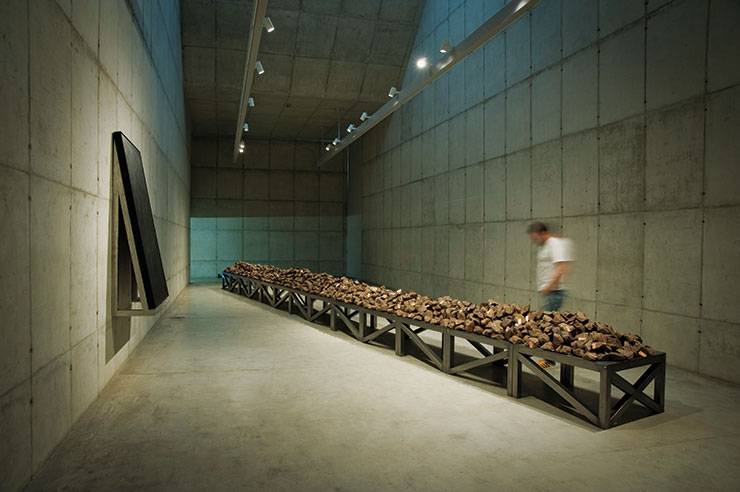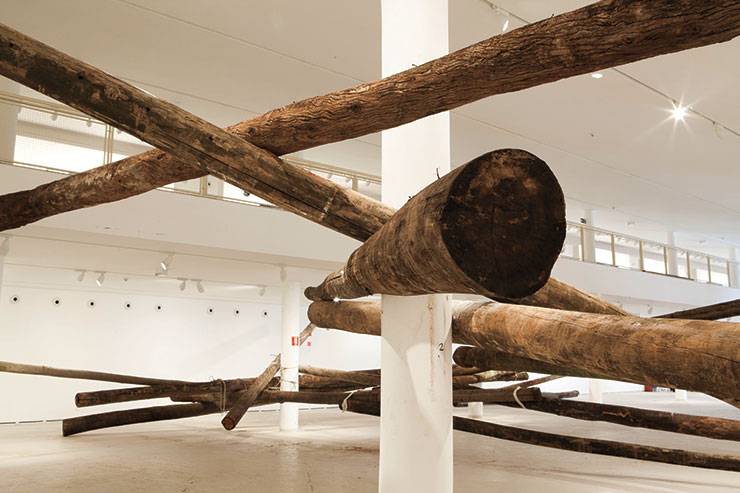INHALE is a cultural platform where artists are presented, where great projects are given credit and readers find inspiration. Think about Inhale as if it were a map: we can help you discover which are the must-see events all over the world, what is happening now in the artistic and cultural world as well as guide you through the latest designers’ products. Inhale interconnects domains that you are interested in, so that you will know all the events, places, galleries, studios that are a must-see. We have a 360 degree overview on art and culture and a passion to share.

While summer headlines roared of protest marches from a disenchanted Brazilian public over the cost of living and wasteful government spending, the organizers of ArtRio and those planning to attend the September 5 to 8 event remained impressively calm. “We’re going to the fair very hopeful that we’ll do great business like we did before,” says Gagosian Gallery director Victoria Gelfand Magalhaes, who brought substantial dealer power—and a reported $130 million in art—to last year’s edition of the three-year-old fair. Pace Gallery’s Brazilian representative, Elizabeth Esteve, is similarly unfazed. Pace has participated in São Paulo’s SP-Arte, but this is its first outing at the Rio de Janeiro event. “The turmoil is not holding us back,” says the London-based Brazil native, adding that plans are already in place for gallery events during the 2016 Olympic Games.
These international dealers have reason for optimism. By local accounts, the protests should be taken as signs of progress rather than distress. They come after a decade of growth in the world’s sixth-largest economy, which has elevated millions of residents out of poverty and brought unemployment to historically low levels. They are a plea to the government to maintain and support the rising tide of the country’s economic development. At the top end that development has fostered an unprecedented number of Brazilian private collectors, whose art purchases represent 71.5 percent of gallery sales—about $100 million per year—according to data gathered by the Associação Brasileira de Arte Contemporãnea (ABACT) and Apex-Brasil, a commerce promotion agency, in 2013.
In fact, Brazil’s own art dealers, both established and emerging, believe Europeans and Americans have much to look forward to besides sipping a caipirinha on Ipanema Beach after a day at the fair. ABACT says the number of contemporary art galleries in the country grew 22.5 percent in 2012, over and above 44 percent between 2010 and 2011, an increase far greater than that seen in other economic sectors. Alexandre Roesler, director of São Paulo’s Galeria Nara Roesler, a 25-year-old venue that focuses on mostly Brazilian artists practicing from the 1960s to the present, believes the growth is the result of an increased professionalism in business practice that has been ongoing for at least five years as part of the economic boom. “There has been a rising interest in Brazilian art, not only among foreigners but also among Brazilians who can now follow and take part in the market,” he says. In addition to internationally known figures, such as former mining magnate Bernardo Paz—who opened Inhotim, a garden to showcase part of his collection in the city of Brumadinho—and Gilberto Chateaubriand, a newspaper heir whose collection is said to number 7,000 objects, notable locals now also include housewares impresario Fernando Assad Abdalla, advertising executive German Carmona, and architect Felipe Hess.
“The quality of national artists has always been very high,” says Flaviana Bernardo, one of the partners of the city’s up-and-coming Emma Thomas Gallery. “What’s changed since the 1990s is the quality of the collectors. As more Brazilians get interested in art and have the purchasing power to go with it, the more attention Brazilian artists get around the world.”
As the art world has truly globalized, so too has the reach of its Brazilian market. ABACT’s study states the work of Brazilian artists has found homes in 130 international institutional collections; total export sales in 2012 were $27 million, up more than $8 million from the previous year, and an increase of roughly 350 percent since 2007. The main export destinations were the United States, Britain, Switzerland, France, and Hong Kong. The largest growth was in exports to the U.K., where demand grew 200 percent between 2011 and 2012. In an impressive show of confidence, 86 percent of Brazilian galleries say they give financial and logistical support to their artists’ participation in international events, and 30 percent maintain partnerships with galleries abroad. “I remember that about eight years ago it was very uncommon to see international collectors, artists, or curators in the gallery except during events such as the Bienal São Paulo,” says Roesler. “Now we welcome foreigners, who have business in Brazil, on a daily basis.”
“We are seeing many galleries opening in Brazil, not only in São Paulo but also in other capitals,” says Eduardo Leme of his eponymous gallery. “This shows effort and belief in the art market. Moreover, society gains a lot from it.”
Brazilian art stars such as Lygia Clark, Cildo Meireles, Beatriz Milhazes, Vik Muniz, and Adriana Varejão already command substantial prices on both the primary and secondary markets. Clark’sContra relevo (Relief Against), 1959, sold for $2.2 million at Phillips New York this past May, setting a record for a Brazilian artist at auction. Clark, whose Constance Butler–curated retrospective is scheduled to appear at the Museum of Modern Art in New York next year, toppled Milhazes, who earned the title when her Meu limão (My Lemon), 2000, earned $2.1 million at Sotheby’s in November 2012.
Just as foreign galleries have used Art Rio and SP-Arte to capture the attention of local collectors, the participation of Brazilian galleries on the worldwide fair circuit provides crucial diversification of their client base. “Approximately 40 percent of our sales happen at national and international fairs,” says Maria Quiroga, director of São Paulo’s Galeria Luisa Strina, the first Latin American gallery invited to participate in Art Basel in 1992. “Without that participation, the gallery would not have the magnitude it has.” From the collector perspective, Brazilian-based fairs present a key opportunity to acquire works closer to market value as the country’s substantial sales tax—one of the primary issues of the protests—are reduced for the events.
“Even though the market in Brazil has grown, we still represent only one percent of transactions in the art world,” says Quiroga. “The concern is about the positioning of artists on the international circuit, to ensure the sustainability of the market, the reduction of import tax, and the promotion of art as cultural heritage and not just a luxury.”
Unfortunately, national institutions have not kept pace with collector activity. “Brazilian museums have been going through changes in the past few years in an effort to invigorate attendance and enhance collections,” says Bernardo. “But since there is still an immense amount of bureaucracy for organizing projects inside museums, institutional efforts are overshadowed by the vast array of events and programs developed by galleries and private institutions.” Case in point: Pace’s Esteve plans to give ArtRio attendees a taste of the many James Turrell exhibitions that opened this summer by showing the artist’s pieces in the fair’s curated section of international artists. Her booth’s show of work by Alexander Calder will be accompanied by a panel discussion featuring the artist’s grandson and Calder Foundation founder Alexander S.C. Rower. Add VIP dinners and tours of private collections to the mix—Kate Moss was said to be partying at an SP-Arte event last spring—and museums (and their potential trustees) have a lot of ground to cover to catch up. “The future of art in Brazil depends on the economy but also relies strongly on the cultural growth of Brazilians,” says Bernardo.
Although the private sector’s perspective is optimistic, only an organized, supported system of both for-profit and nonprofit entities will be able to sustain the expansion and insulate Brazil’s art scene from local economic fluctuations. Of course, an overlooked benefit of a strong art market is its contribution to local employment. As ABACT’s research indicates, the average gallery staff numbers eight, while the market supports some 1,000 artists. Gallerist Eduardo Leme takes a philosophical view of both the progress and the protests. “This is part of a healthy process of democracy,” he says. “The results can only be positive.”
via blouinartinfo.com



